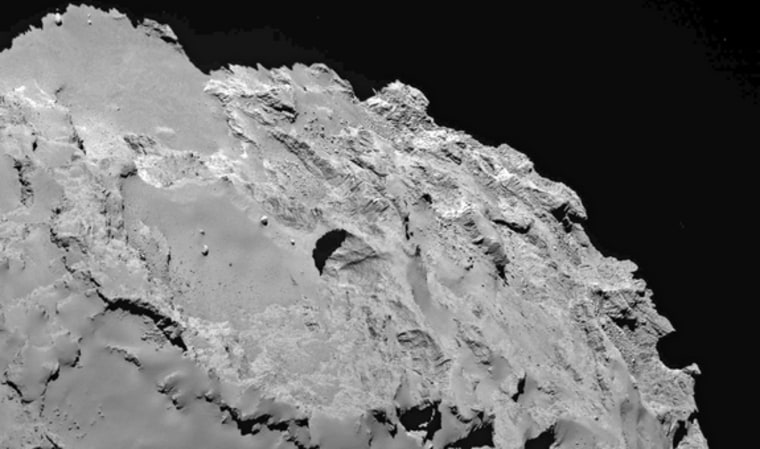Strange pits and divots observed on the surface of Comet 67P/Churyumov-Gerasimenko may be sinkholes, not unlike those that appear on Earth, a new analysis suggests.
Images of the comet taken by the European Space Agency's Rosetta probe show the object's surface is spotted with flat-bottomed pits that are emitting jets of gas. New research reveals how the steep divots could be created by melting ice under the comet's surface, which creates empty spaces that can suddenly cave in.
Since August 2014, Rosetta has been orbiting Comet 67P (as it's known for short) and photographing its every facet. But the inner workings of the comet, and its unusual pits and jets, have gone unexplained — until now.

The new research suggests that when subsurface ice melts and the empty spaces suddenly cave in, new parts of the comet become exposed to the sun's glare and heat up. This additional heat can generate gases inside the comet that escape as jets. The researchers say that understanding the sinkholes' formation might help determine the comet's' makeup and age.
"Now, for the first time, we have a clear link between jets and between these pits that we have observed on the surface," Jean-Baptiste Vincent, a planetary scientist at the Max Planck Institute for Solar System Research in Germany, told Space.com "And it's also telling us a lot of things about the evolution of the comet and about the inner structure."
Vincent is first author on the new research, which was published online on July 1 in the journal Nature.
Photos of the comet revealed two types of pits: There are shallower pits, with more gradual, sloping sides. And there are pits with deep, nearly vertical walls, which create empty cylinders in the ground. Jets of material fly out of these steep pits' sides, and researchers originally thought this was evidence that explosions were creating the pits. But now the scientists say that cannot be the case.
"The small jets that you see, it could take them forever to carve the pits that we observe now," Vincent said.
The new analysis of data from Rosetta suggests instead that the pits form when the roof of an empty space in the comet collapses, similar to sinkholes that form on Earth and Mars. Vincent said that the voids could come from ice within the comet's core turning to gas and escaping after exposure to heat. Then, the newly exposed walls of the pits begin to react in the sunlight by releasing material in jets, slowly collapsing and flattening them over time.
This is a condensed version of an article from Space.com. Read the entire story here. Email Sarah Lewin at slewin@space.com or follow her @SarahExplains. Follow us @Spacedotcom and Facebook.
